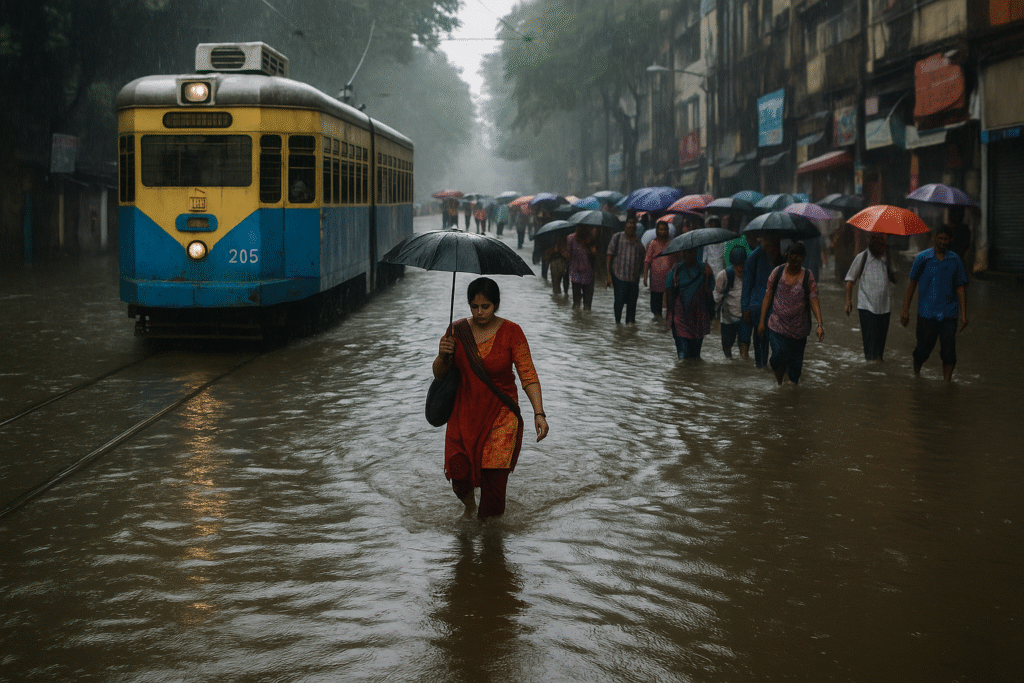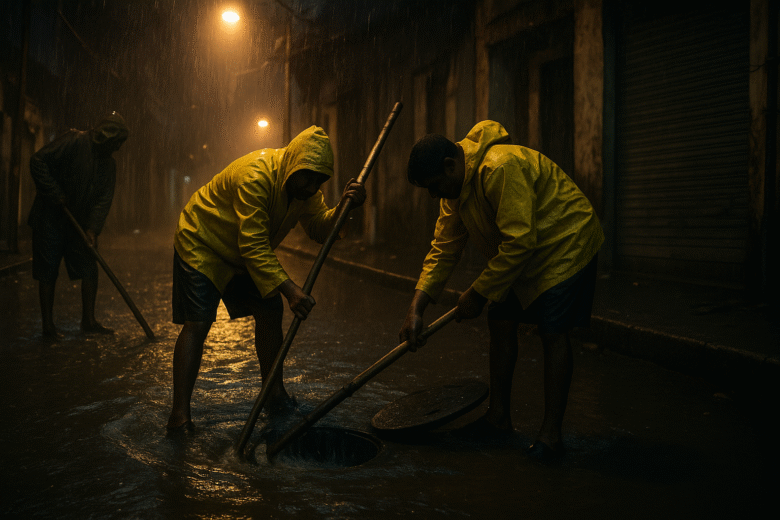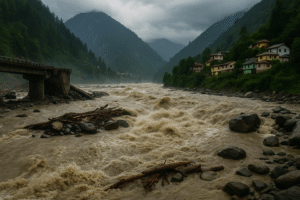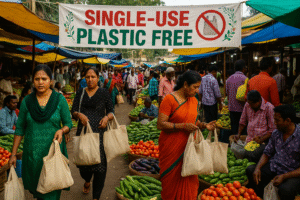Fun Fact: Some of Kolkata’s main underground drains were built over 150 years ago—when horse-drawn carriages ruled the streets, not cars or climate chaos.
Every monsoon, Kolkata holds its breath. The rains come—sometimes gentle, sometimes furious—and the old city gasps under its own weight. Streets turn into rivers, manholes bubble like geysers, and people wade through waist-deep water as if reenacting an annual ritual. The title of this story—“Climate Change and Old Drains: Kolkata’s Battle with Urban Flooding”—captures more than an engineering crisis. It’s a story about time, neglect, and a city built for another era now struggling to survive this one.
The Colonial Blueprint That Outlived Its Era
Kolkata’s drainage network was designed by the British in the 1850s, a marvel of its time. Brick-lined sewers, gravity-fed canals, and surface runoffs kept the colonial capital dry enough for commerce. But those systems were meant for a city of less than half a million people and far gentler rainfall. Today, more than 14 million people depend on the same bones.
When monsoon downpours now dump over 150 millimeters of rain in a few hours, the drains choke. Plastic waste clogs the old brick sewers, the outfall points are blocked by encroachment and silt, and rising river levels prevent the outflow of stormwater. The result: water stagnation that lasts for days, breeding mosquitoes and spreading disease.
Climate change has only worsened the script. The Indian Meteorological Department (IMD) notes that rainfall patterns over eastern India are becoming erratic—shorter bursts, higher intensity. This means instead of steady rain, Kolkata now faces violent cloudbursts that overwhelm its century-old system. Add to that sea-level rise and urban sprawl, and the city’s resilience collapses.
Case Study: September 2021 – When the City Stopped
In September 2021, a record-breaking downpour paralyzed Kolkata. Over 230 millimeters fell in 24 hours—flooding homes, disrupting transport, and forcing schools to close. Pumps ran nonstop, but the drains couldn’t cope. Social media was flooded (literally and metaphorically) with images of people rowing makeshift boats through Ballygunge and Salt Lake. The Kolkata Municipal Corporation (KMC) deployed emergency crews, but even they admitted: “No drainage system can handle this volume of rain.”
It wasn’t just a freak event—it was a warning. The same system that once symbolized British efficiency has become a relic. Engineers have long recommended overhauling the core drains, widening the outfall channels, and integrating rainwater harvesting. Yet, bureaucratic red tape and fragmented urban planning keep progress slow.
When Infrastructure Fails, Inequality Rises
Floods don’t treat everyone equally. In upscale neighborhoods, residents complain of waterlogging; in poorer ones, it’s survival. Slums built near canals and low-lying areas bear the brunt—houses submerged, belongings lost, children wading to school through polluted water.
In parts of Topsia and Behala, residents say water enters their homes within minutes of heavy rainfall. Open drains overflow with sewage, and relief takes days. Climate change doesn’t just test pipes and pumps—it tests justice. When infrastructure collapses, privilege becomes a life raft.

Kolkata’s Climate Future: Sinking and Sweating
Scientists warn that by 2050, Kolkata could be among the most climate-vulnerable cities in the world. Rising sea levels from the Bay of Bengal, saltwater intrusion into groundwater, and frequent cyclones like Amphan and Yaas are reshaping the delta’s geography. The Hooghly River, once a lifeline, now floods more aggressively due to backflow during high tides combined with storm surges.
A report by the National Institute of Urban Affairs emphasizes that 60% of Kolkata’s surface is now impermeable—concrete, not soil. That means rainwater has nowhere to go but down the streets. Green spaces that once absorbed excess water are vanishing, replaced by malls and housing complexes. The city’s lungs and sponges are being suffocated.
Reimagining Drains for a Changing Climate
So, what’s the way forward? The answer lies in modernization with memory. Cities like Tokyo and Singapore have built massive underground reservoirs to hold stormwater. Kolkata can learn from them, but also from its own past. The East Kolkata Wetlands—once dismissed as waste zones—are natural flood buffers. Protecting them could be the difference between disaster and relief.
Decentralized systems like rain gardens, rooftop storage, and permeable pavements can reduce surface runoff. But these require planning that looks decades ahead—not just until the next election. Policymakers must see drains not as dull infrastructure but as arteries of urban life. When they fail, the whole body suffers.
The Kolkata Environmental Improvement Project, backed by the Asian Development Bank, has already begun rehabilitating key drainage channels. But unless citizens and officials treat stormwater management as a civic priority, not a seasonal inconvenience, progress will remain patchy.
Conclusion: The Past Is Flooding the Present
Kolkata’s flooding problem isn’t just about rain—it’s about reckoning. The city is paying the price of inherited neglect. The same pipes that carried the colonial city through its glory days are now carrying its tears.
Climate change has turned the monsoon from a blessing into a battle. And unless the city learns to adapt, it will drown not just in water, but in nostalgia. Modern cities can’t run on colonial blueprints. It’s time for Kolkata to stop patching old drains and start building new resilience.
Author’s Note
When I began writing about Kolkata’s flooding, I thought I’d be writing about pipes and pumps. But somewhere along the way, I realized it’s about memory—of cities built on borrowed time. There’s something deeply human about our reluctance to replace what’s familiar, even when it’s failing. Writing this reminded me that change doesn’t always arrive as a storm; sometimes, it creeps up through the cracks in the floor, silently asking to be heard.
G.C., Ecosociosphere contributor.
References and Further Reading
- Climate change and aging drains wreak havoc on Kolkata, India — Mongabay
- Urban Floods: Case Study of Kolkata — National Institute of Disaster Management (NIDM)
- Climate Change and Urban Flood in Kolkata: Vulnerability and Mitigation — ResearchGate/IOSR Journal
- How Kolkata Can Minimize the Impact of Heavy Rainfall — The Jain Group blog
- Intense rainfall spotlights the fault in Kolkata’s aging, clogged drainage systems — Mongabay India
- Plastic waste adds to drainage struggle — Times of India




